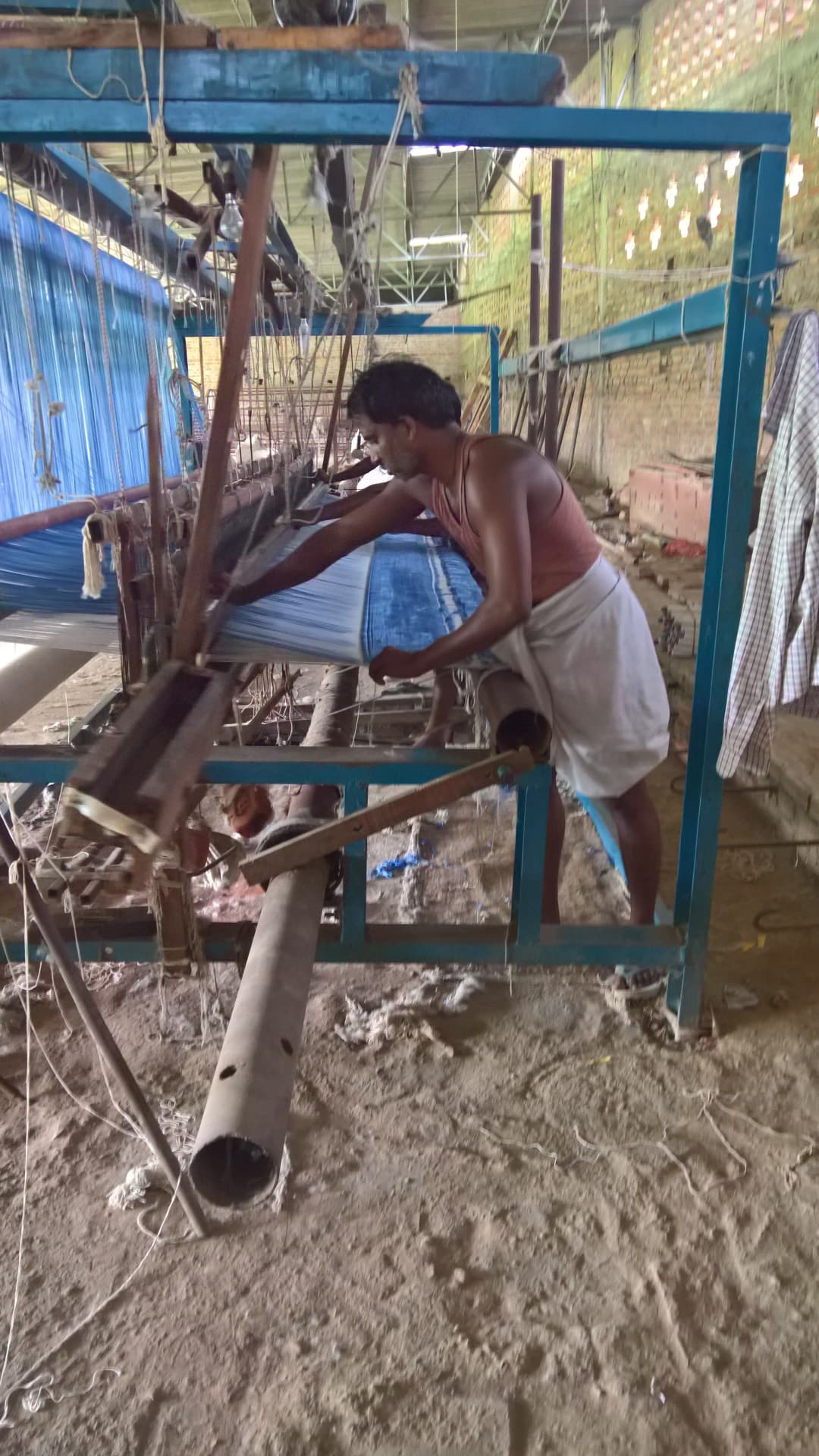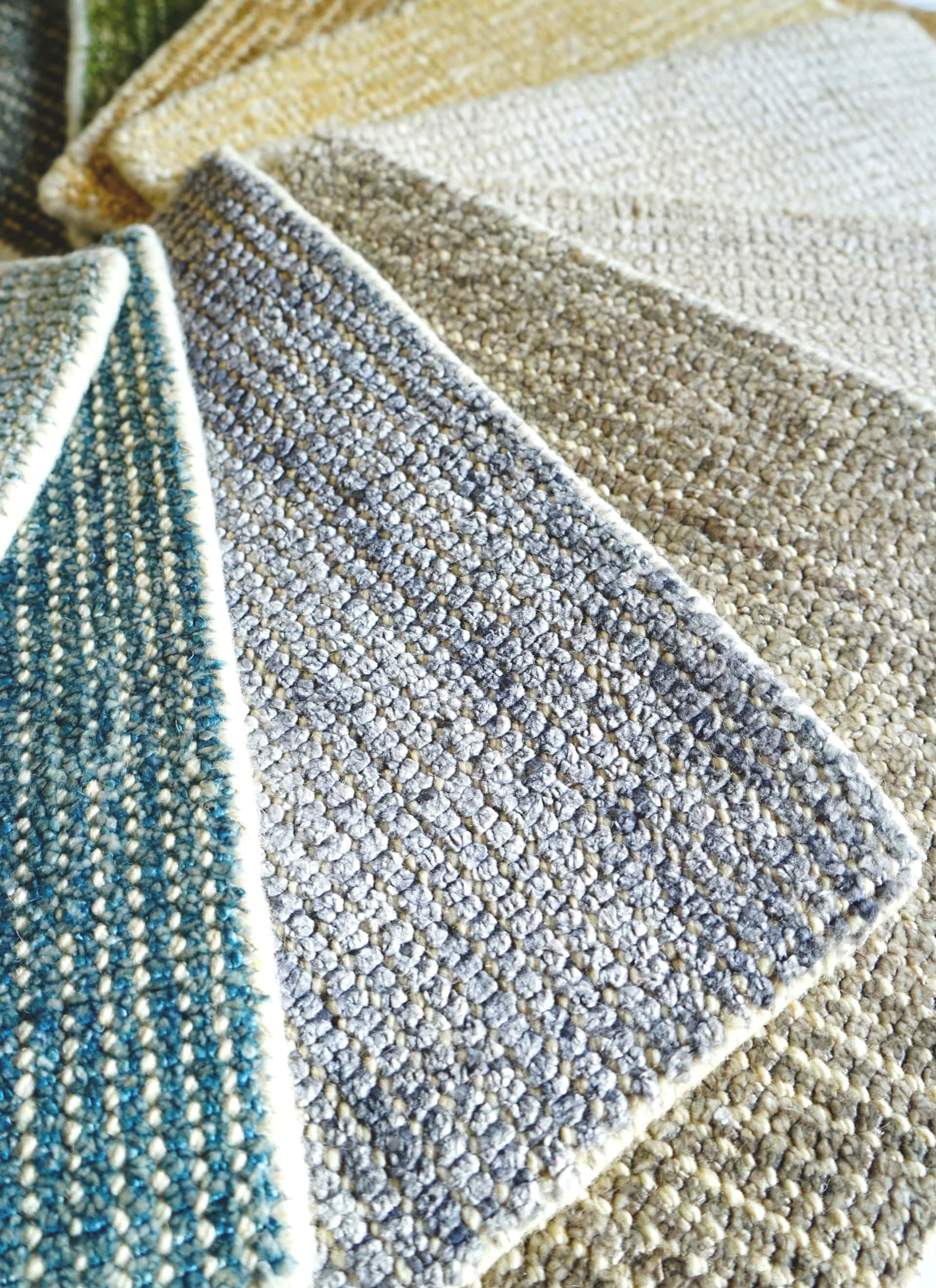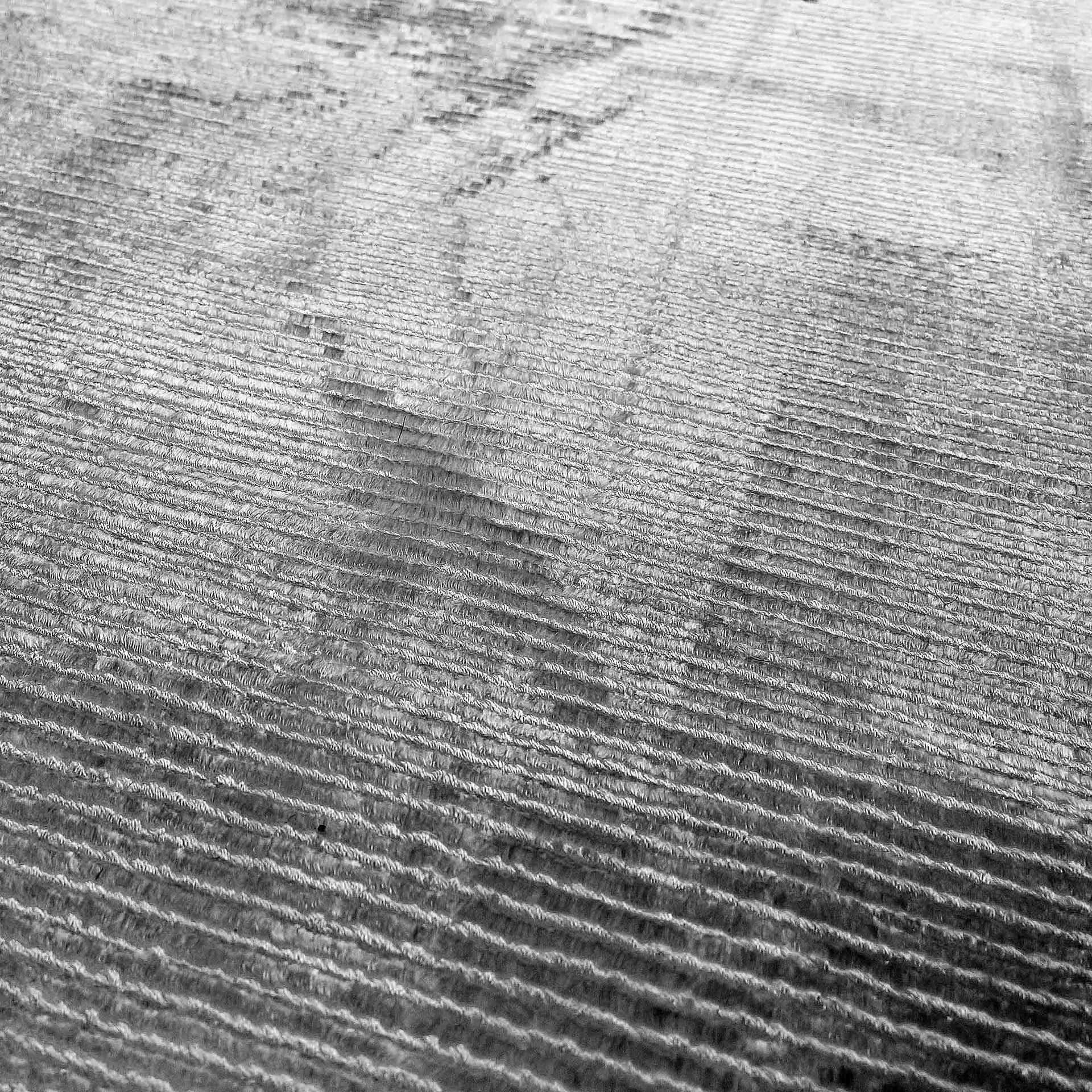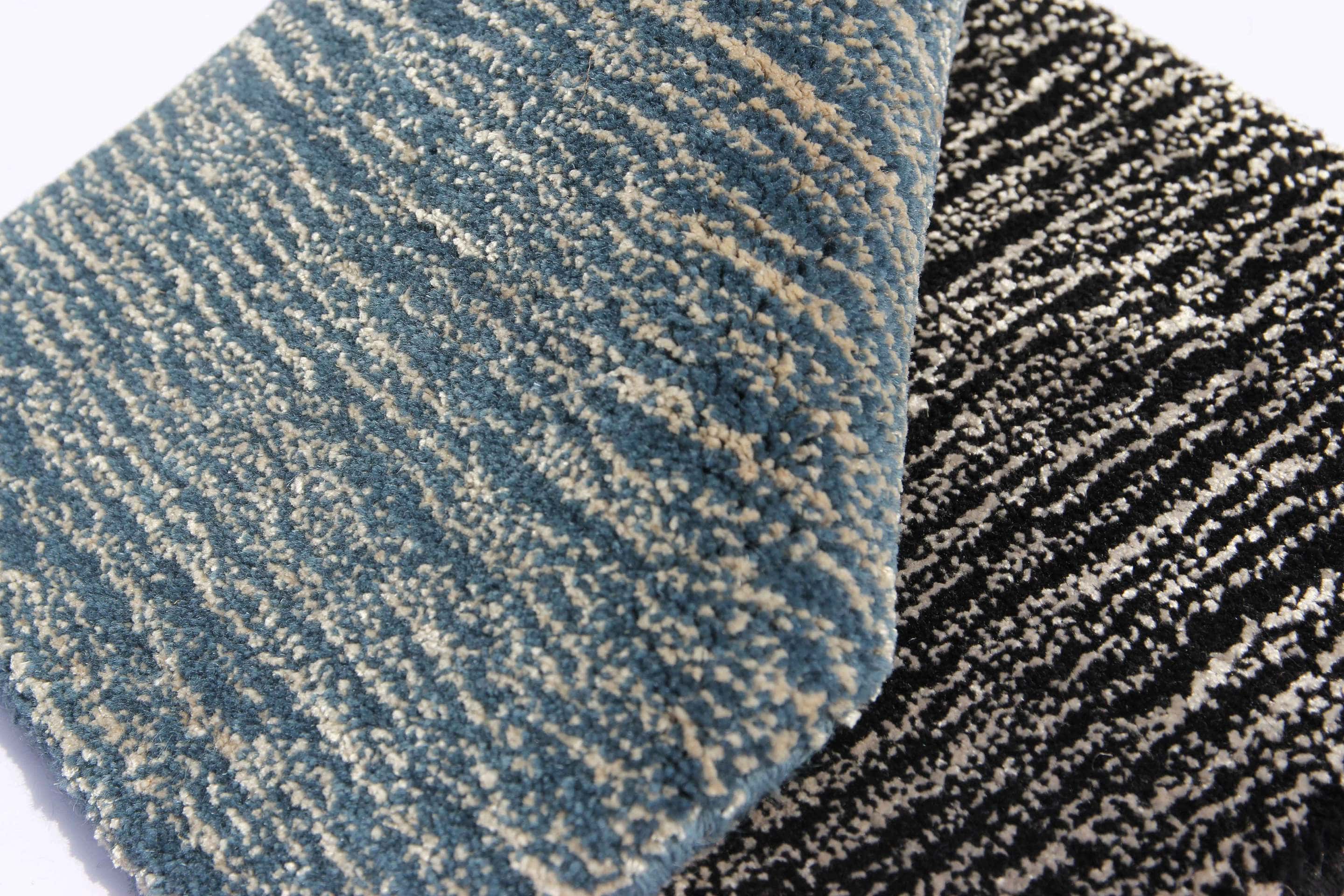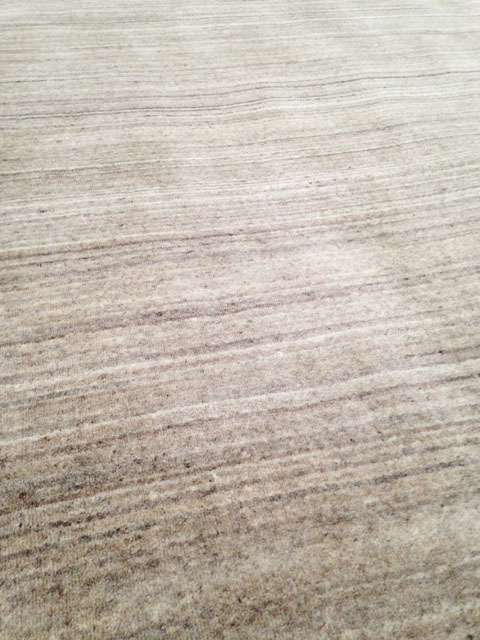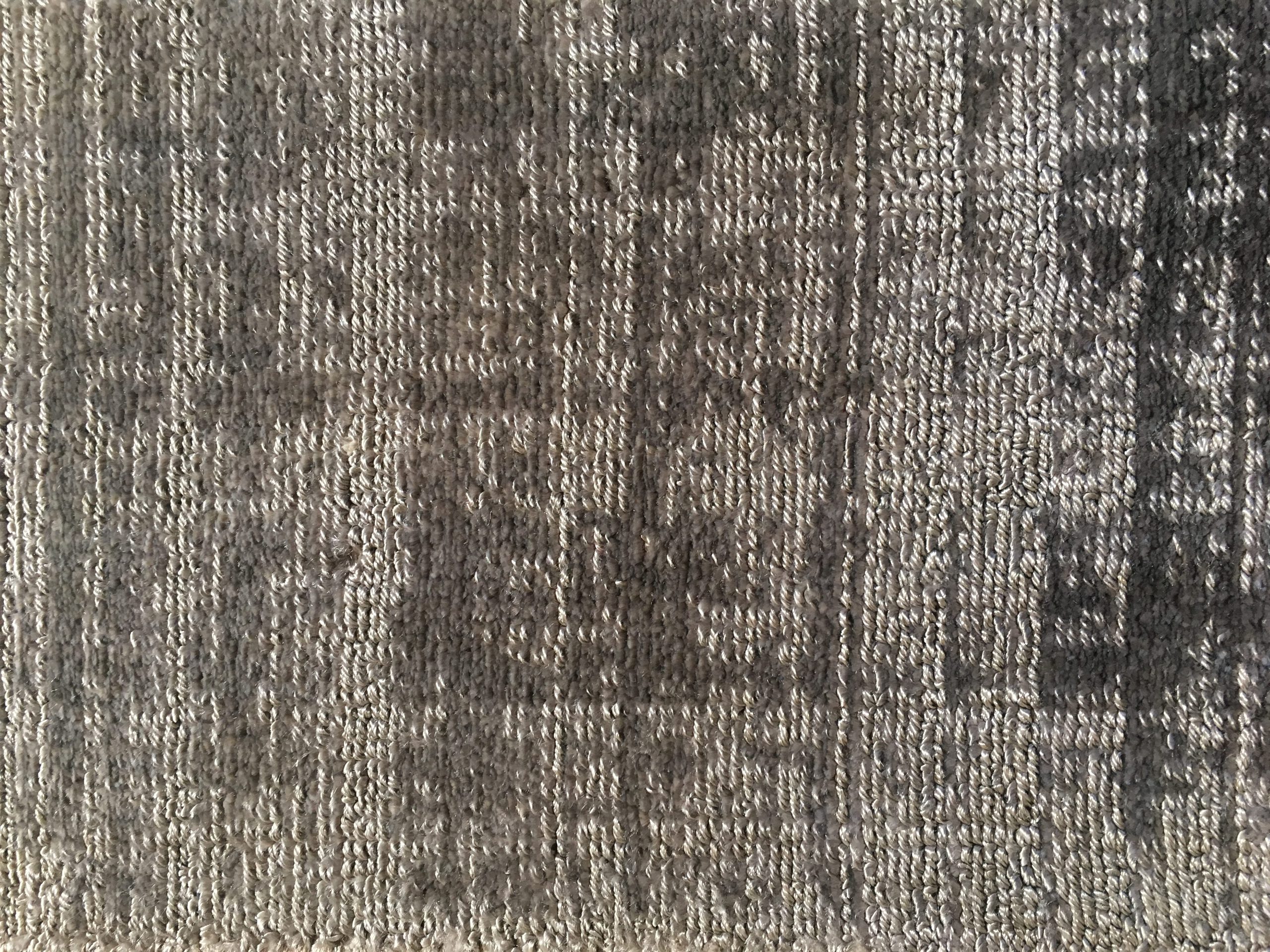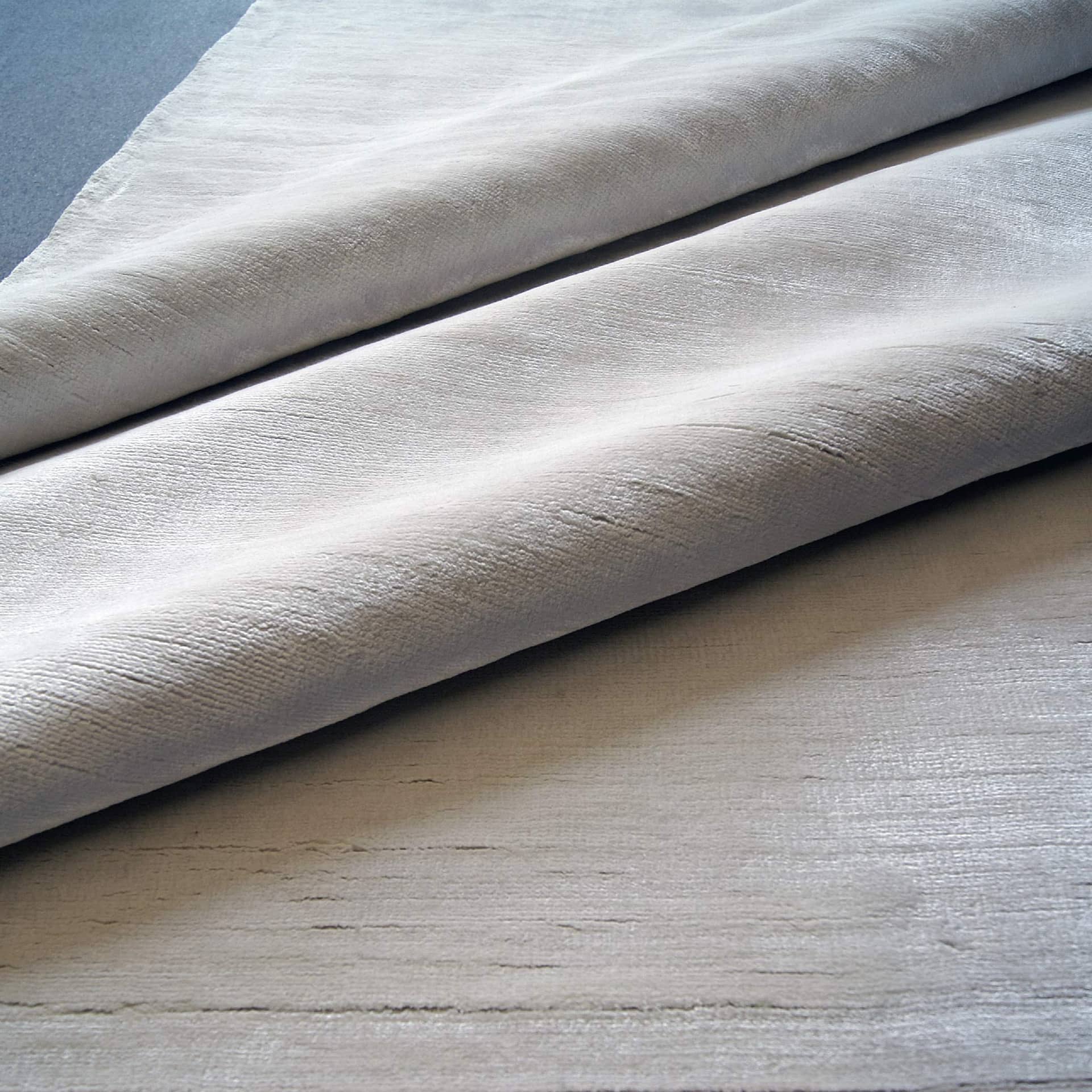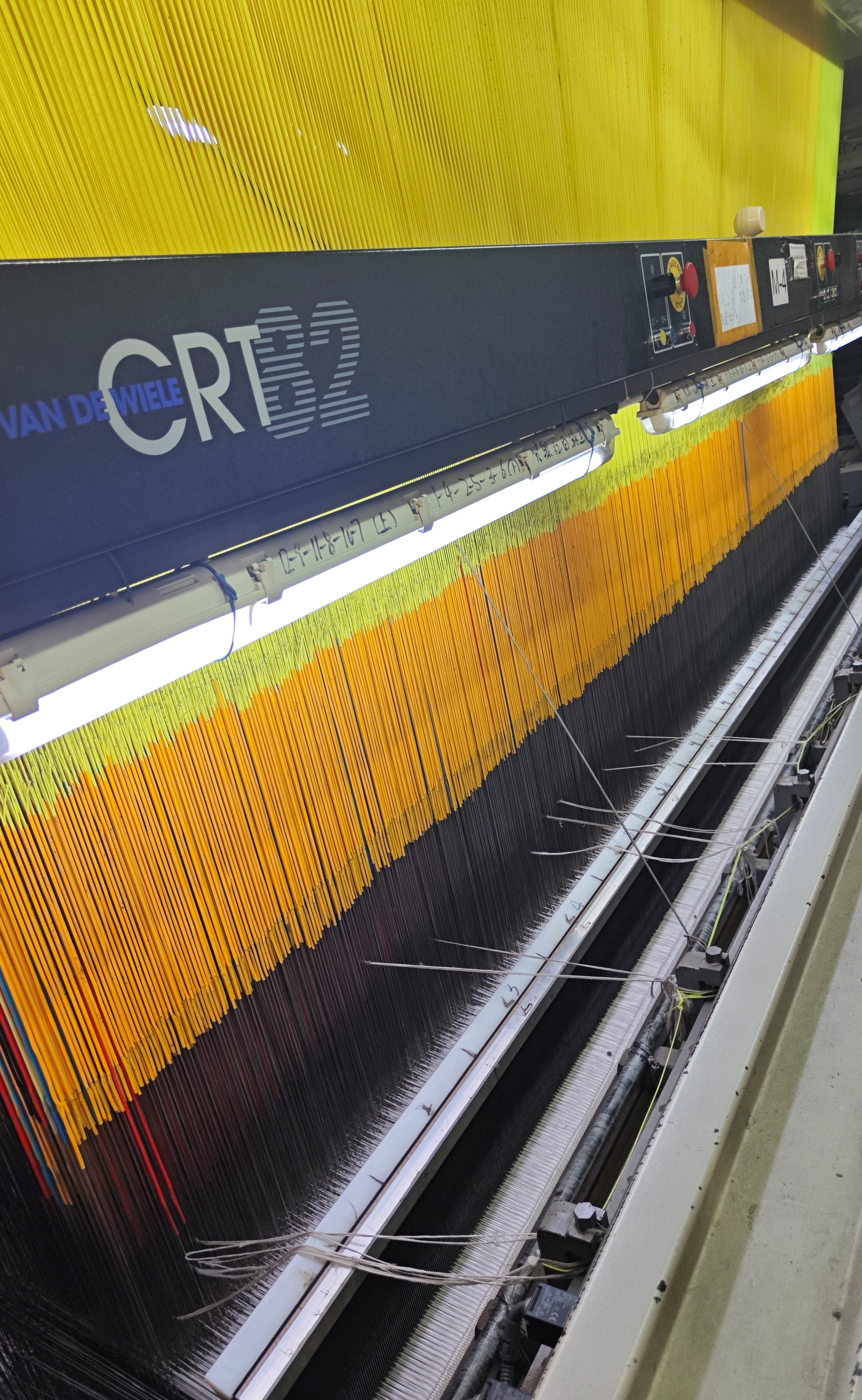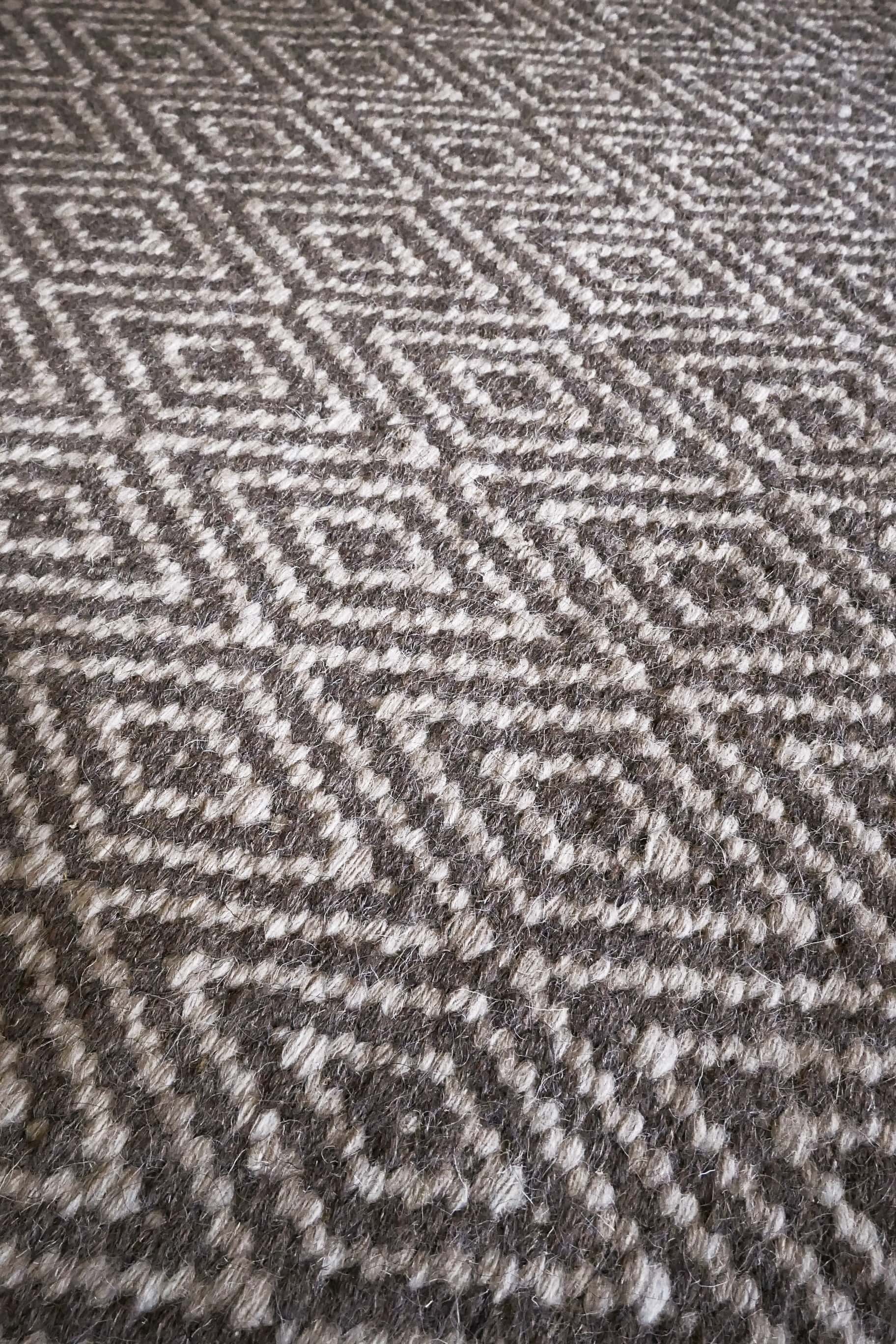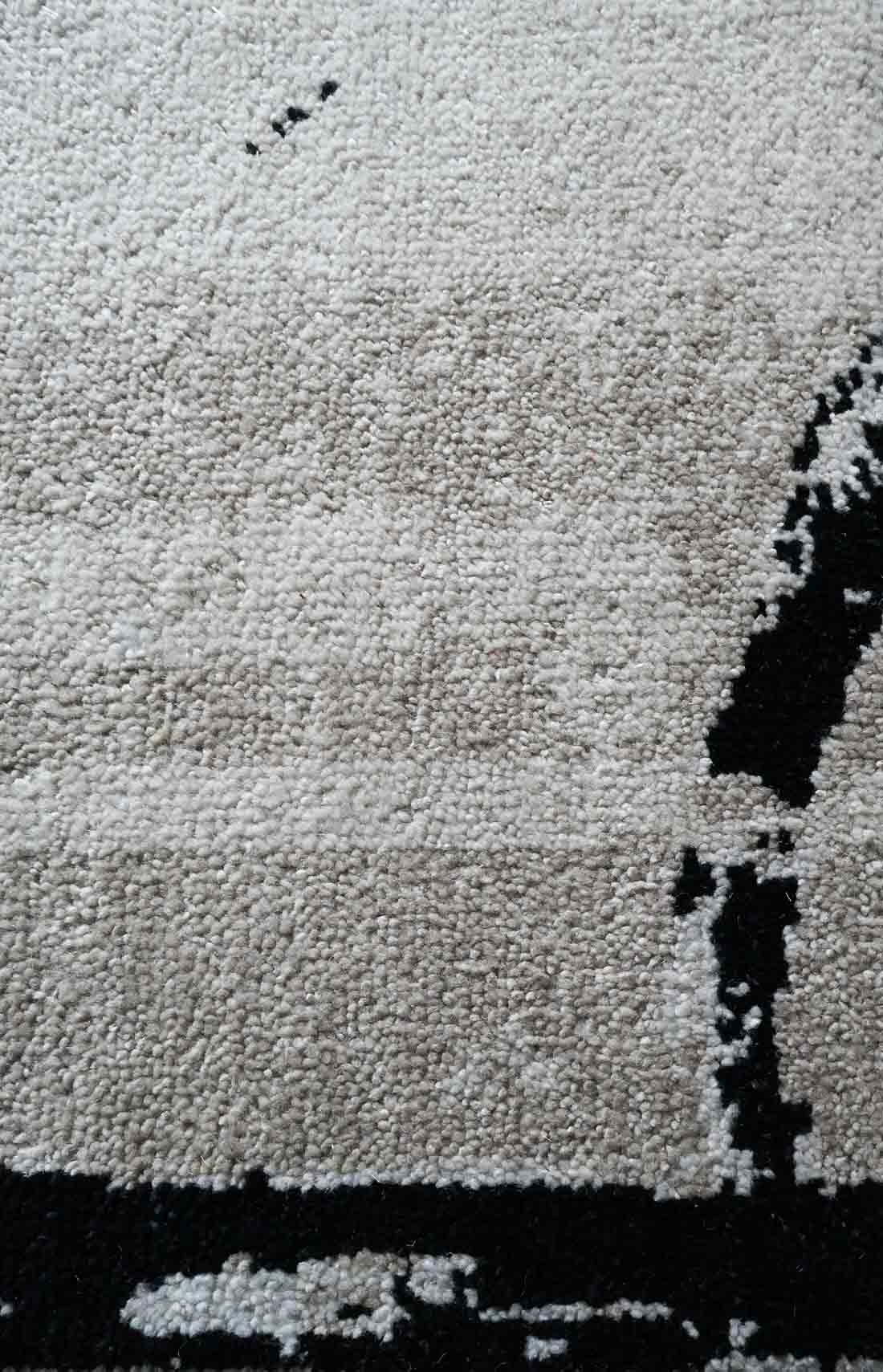The Handloom Weave
THE MANUALLY-OPERATED LOOM
The warp threads of wool, silk or other cellulose fibres are laid side by side on a drum located at the back of the loom. It is the number of teeth on the reed (kangi) used to distribute the threads on the drum that determines how tightly they are held together. A quality kangi 10 (5 threads per inch) is less tight than kangi 12 (6 threads per inch).
A shuttle containing the weft thread is propelled from one side of the rug to the other while the yards (metal rods as long as the width of the rug) determine the height of the pile. Similar to the round rods used in the Nepalese knotting technique.
If not cut, it stays in the form of loops.
The reed and the heddle bars, which lift the warp threads alternately, are operated by foot and hand.

